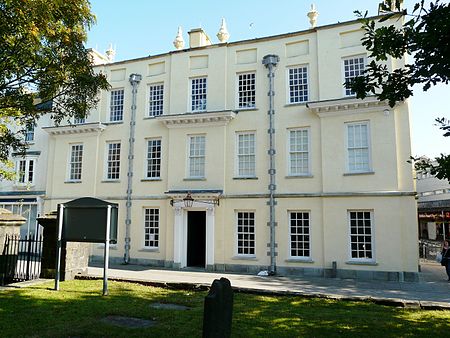Llanelly House

Llanelly House (also spelled Llanelli House) is one of the most notable historic properties in Llanelli, Carmarthenshire, Wales—an excellent example of an early-18th-century Georgian town house. It had been described as "the most outstanding domestic building of its early Georgian type to survive in South Wales."The then Member of Parliament for Carmarthenshire, Sir Thomas Stepney, 5th Baronet, of the Pembrokeshire and Carmarthenshire Stepney family, originally built the house in 1714. John Wesley, the early leader of the Methodist movement, stayed at the house several times during his visits to the town.The house, located directly opposite the parish church of St Ellyw, was in a poor state of repair; however, the town council purchased it from the local business community with the intention of completely restoring the House for civic and public use.
Excerpt from the Wikipedia article Llanelly House (License: CC BY-SA 3.0, Authors, Images).Llanelly House
Vaughan Street,
Geographical coordinates (GPS) Address External links Nearby Places Show on map
Geographical coordinates (GPS)
| Latitude | Longitude |
|---|---|
| N 51.6834 ° | E -4.1614 ° |
Address
Llanelly House
Vaughan Street
SA15 3TY , Llanelli
Wales, United Kingdom
Open on Google Maps










